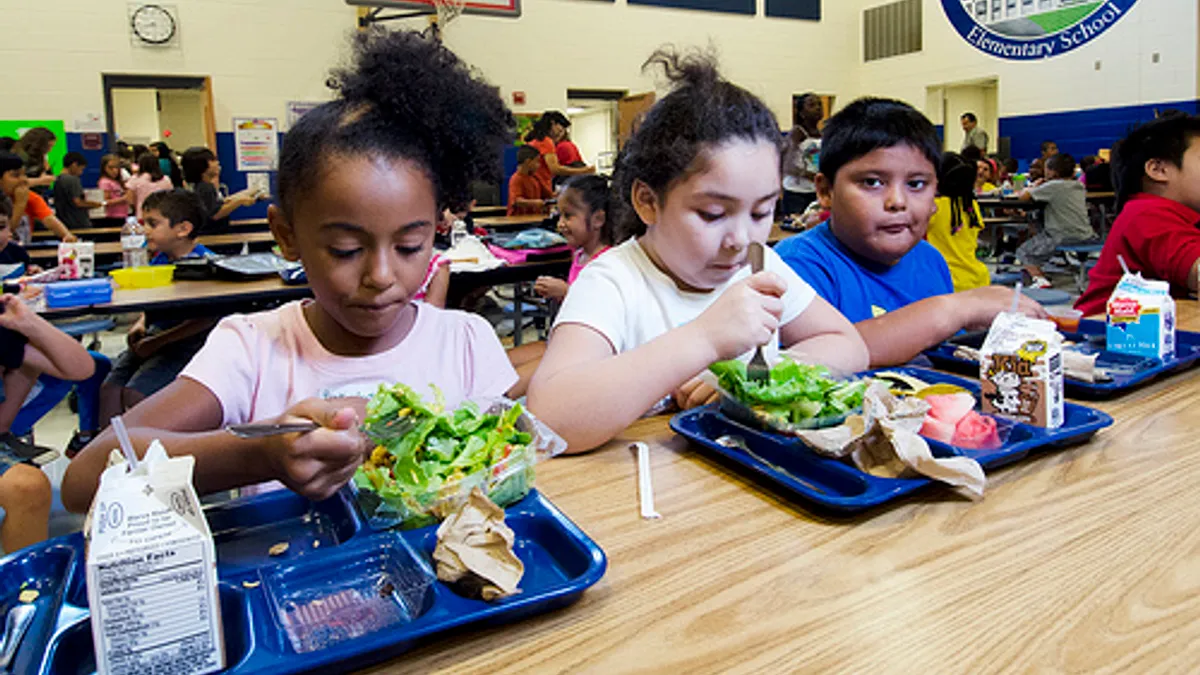Jillien Meier is director of No Kid Hungry Partnerships and Campaign Strategy at Share Our Strength, a nonprofit devoted to addressing hunger and poverty.
Across the nation, kids are preparing to go back to school. Many will be returning to the classroom for the first time in over a year, and the excitement is palpable. As summer winds down, families are stocking up on notebooks, pencils and other supplies, working to ensure their kids are prepared to learn.
Yet, as kids head back to school this fall, one in six children across the nation could struggle with hunger as they re-enter the classroom. Hungry kids have a harder time learning, and just like textbooks and pencils, food is an essential school supply.
As teachers work with students to help them complete their unfinished learning, ensuring kids have access to meals will make the school year smoother by boosting test scores, attendance rates and the lives and future well-being of students. School nutrition programs can play a massive role helping kids get the food they need.
Furthermore, they can also help reduce food insecurity and support learning, which will be especially important this year. Research shows schools often serve more nutritiously balanced meals than many kids get at home. Kids eat on a regular schedule, and they eat with their friends and adults, like teachers. Not only do school meals provide nourishment, they also build a sense of community and stability. In a year where kids have faced trauma, this community can help them heal and recover.
In short, when kids get the food they need and know that food will be there today and tomorrow, it both nourishes their bodies and helps relieve stress. This helps kids focus on the classroom and on just being kids. And that helps schools focus on building community and accelerating learning.
The importance of ensuring children have access to food cannot be understated. Research shows not only do food insecure children have a harder time learning, they’re also more at risk of developing chronic illnesses as well as social and behavioral problems. These problems can have huge ramifications, potentially even following children into adulthood and negatively impacting their future economic prosperity.
Helping kids get the nutrition they need now can help solve these problems before they ever develop.
Additionally, schools can play a bigger role: Even before the pandemic, some schools offered health services, social services and more. Now, schools have the chance to become nutrition hubs for their communities. In 2020, School Nutrition Association reported 33% of districts started offering adult meals, 22% started offering Fresh Fruit and Vegetable Program snacks, and 11% started offering supper.
This expansion of school meal programs provides a foundation for continued expansion of other school-based nutrition programs, as well, and schools also have an opportunity to do additional benefits outreach programs, including Supplemental Nutrition Assistance Program, the Child Tax Credit and the Earned Income Tax Credit.
Despite these opportunities and flexibilities schools have, there are still challenges — many of which will have to be dealt with as the school year evolves. Many challenges and uncertainties lie in the year ahead, and it will be necessary to monitor and adapt as the landscape on the ground changes.
There’s also more work to be done: We must take the lessons we’ve learned as a nation during the pandemic — the effectiveness of additional summer grocery benefits and maximizing SNAP benefits, as well as allowing meals to come to kids rather than making kids come to meals — and make them part of future solutions.
Even though many students are going back to school this fall, that doesn’t mean they have to go back to normal. This year, we have the opportunity to rebuild better, stronger systems for our children. We cannot let them down.







 Dive Awards
Dive Awards





